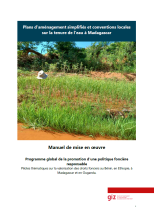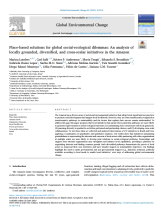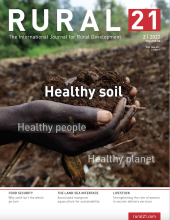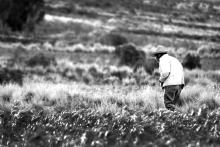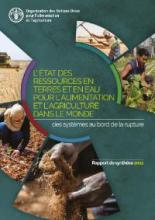Land Library Search
Through our robust search engine, you can search for any item of the over 73,000 highly curated resources in the Land Library.
If you would like to find an overview of what is possible, feel free to peruse the Search Guide.
/ library resources
Showing items 1 through 9 of 33.This study focuses on evaluating the impacts of eucalyptus tree plantations and other tree species on various aspects such as agricultural production, water resources, soil nutrients, natural forests, and biodiversity in the Sidama National Regional State (SNRS) of Ethiopia.
Les plans d’aménagement simplifiés et les conventions locales sont des approches communautaires et paysagères qui permettent d’oeuvrer sur la tenure de l’eau de manière holistique.
The Amazon has a diverse array of social and environmental initiatives that adopt forest-based land-use practices to promote rural development and support local livelihoods.
Version abrégée de la publication phare de la FAO, La situation mondiale de l’alimentation et de l’agriculture 2022, cette brochure contient les principaux messages et le contenu de la publication et est destiné aux médias, aux responsables politiques et au grand public.
We cannot live without healthy soil and land. It is on these resources that we produce most of our food and build our homes. We need them to provide clean water and precious plant nutrients, to conserve biological diversity and to cope with climate change.
En los últimos años, la Chiquitanía, Chaco y la Amazonia han experimentado recurrentes eventos climáticos adversos, pero también, los territorios campesinos e indígenas están fuertemente presionados por el avance del modelo agroindustrial.
Land degradation neutrality (LDN) has been defined by the Parties to the Convention as: A state whereby the amount and quality of land resources, necessary to support ecosystem functions and services and enhance food security, remains stable or increases within specified temporal and spatial scal
La réponse à la demande accrue de produits alimentaires accentue la pression exercée au niveau mondial sur les ressources que sont les eaux, les terres et les sols.
L'Afrique n'est pas sur la bonne voie pour atteindre les cibles de l'objectif de développement durable (ODD) 2 visant à éliminer la faim et à assurer l'accès de tous à une alimentation saine, nutritive et suffisante tout au long de l'année, et à mettre fin à toutes les formes de malnutrition.


